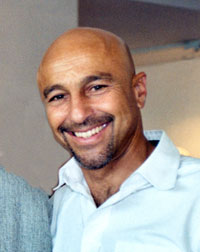In Memory of Charles Bragg (1931-2017)
By Morris Shapiro Charles Bragg was one-in-a-million. I’ve never known anyone like him, nor is it likely that I ever will again. He was an amalgam of many parts: a supremely gifted visual [...]

The art of Charles Lynn Bragg has been seen by millions of people. You might have seen his animal, marine and environmental art in galleries, on school text books, posters, jigsaw puzzles, greeting cards, calendars and U.S Postage Stamps. The United States Postal Service commissioned him to design a commemorative four-stamp panel entitled “Wonders of the Sea” in 1994. Also in 1994 Turner Publishing, Inc. reproduced his work in the book Wild Lives: The animal kingdom of Charles Lynn Bragg. Bragg has designed images for The Greater Los Angeles Zoo, The World Wildlife Fund, The Nature Conservancy, The Nature Company, The Animal’s Voice Magazine and EarthSave.
READ MORE +Charles Lynn Bragg was born in Detroit, Michigan in 1952, but his family moved to Los Angeles in 1956 and he has been there ever since. As a teenager, Bragg was drawn to realism and Classical Art. His visits to galleries and museums in Los angeles, New York, France, England, Spain, and Italy opened his eyes to Impressionism, Surrealism, Contemporary and Conceptual Art. His higher education and formal training took him to numerous local Los Angeles County colleges, the California Institute of the Arts in the 1970s, the Otis Art Institute of Los Angeles in 2003-4 extension courses and the California State University, Long Beach in the years 2005 – 9.
His informal training includes private and group lessons in painting, printmaking, sculpting, drawing, photography, computer graphics, stone lithography and stone carving with artists in California, Italy and Japan. In the 1970s and early 1980s, Bragg was inspired by the graphic works of Durer, Rembrandt, Goya, Picasso and Dali. He honed his drafting skills and etching techniques to produce over a hundred limited edition etchings. In the mid-1980s, acrylic paint, the airbrush and figurative Surrealism became his favorite vision of choice.
In 1986, he painted his seminal image “City Limits”. It started out as a figurative painting of a woman standing in a tropical jungle. Unhappy with the results, Bragg painted out the figure and filled the space with animals, reptiles, birds and insects hidden about in the lush jungle foliage. Finally he added a cityscape and bulldozer in the distant background bearing down on the natural pristine habitat. This environmental theme and artistic style struck a chord within him and the public. “City Limits” inspired about a hundred more paintings over the next fifteen years, in a process of theme and variation. Soft furry animals, hard-scaled reptiles, breaching whales, colorful corals, forest ferns and prickly cactus all found their way into his compositions. he became involved with environmental movements and animal rights issues and he used his art as a tool to promote love and respect for nature and our Earth.
Charles traveled the Earth to photograph the flora and fauna of the oceans, islands, forests, deserts, jungles and the arctic so that he could paint them back in his studio. Bragg made multiple journeys to Africa, Indonesia, Europe, Japan, Central America, Australia, Fiji, Tahiti and throughout North America. Bragg worked primarily with animal and environmental imagery starting in 1986. in 1989, His work was introduced to Japan and Bragg’s conservation themes quickly developed an enthusiastic following and booming popularity. From 1990 until 2003 Bragg showed his work exclusively in Japan and had more than forty one-man shows in over twenty different cities. His work was seen in Japanese galleries, department stores, on licensed products and in magazines. Bragg now made his art to help bring attention to the beauty of a butterfly wing, the plight of dolphins, over-fishing our seas, the loss of natural habits and animal abuse.
By 2003, Bragg refocused his artistic eye to work with the human figure and to carve stone. In 2005 he applied to California State University, Long Beach and ultimately received his BFA in Sculpture in 2009.
In 2011, Bragg worked on a series of paintings based on famous and infamous paintings throughout art history, such as Da Vinci’s “Mona Lisa,” Dali’s “The Persistence of Memory” and Edvard Munch’s “The Scream.” Bragg remakes the original works and gives them his 21st century global makeover. Each chosen image is copied meticulously to be as close to the original painting as possible, but Bragg then adds something that is slightly askew, new, and close to his heart. These images ultimately remind us of our own human nature and elevates the Earth in our hearts.
for breaking news, artist updates, and special sale offers